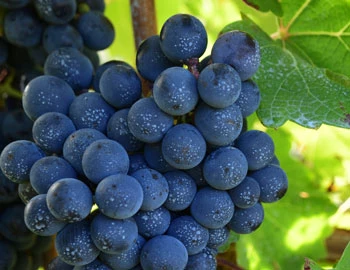
Les Forts de Latour 2018
AC Pauillac, 2ème vin du Château Latour, 750 ml

| Grape variety: | Cabernet Sauvignon, Cabernet Franc, Merlot, Petit Verdot |
| Producer: | Château Latour |
| Origin: | France / Bordeaux / Pauillac |
| Other vintages: |
Description
Citing Robert Parker The Wine Advocate "The 2018 Les Forts de Latour is made up of 65.6% Cabernet Sauvignon, 34% Merlot and 0.4% Petit Verdot, with 14.2% alcohol and an IPT (total polyphenol index) of 77. It was aged in 60% new oak. Deep garnet-purple in color, it needs a fair bit of swirling to reveal notions of baked black cherries, cassis and blackberry pie with hints of pencil lead, clove oil, cardamom and allspice with a waft of violets. Medium to full-bodied, the palate delivers impressive density with velvety tannins and a lively backbone supporting the generous black fruits, finishing long with all the earthy nuances coming through at the very end."
Attributes
| Origin: | France / Bordeaux / Pauillac |
| Grape variety: | Cabernet Sauvignon, Cabernet Franc, Merlot, Petit Verdot |
| Ripening potential: | 5 to 15 years |
| Drinking temperature: | 16 to 18 °C |
| Food Pairing: | Châteaubriand, Filet Wellington |
| Volume: | 13.0 % |
| Note: | Contains sulphites |
Petit Verdot
Bordeaux’s secret weapon
It is commonly said that the Petit Verdot originated in Bordeaux. But genetically, it is closer to a group of vines from near the Pyrenees, which are most likely descended from wild clematis. In French, these wild plants are called “lambrusques”, and the Petit Verdot is also known under the synonym Lumbrusquet. It is a high quality grape: very dark and spicy with notes of cassis and graphite, plenty of robust tannins and strong acidity. Most major Bordeaux contain a small proportion of Petit Verdot. Appropriately, it is valued wherever wines are produced according to the Bordeaux recipe. For example, in Italian Maremma or in California, where it covers the largest area worldwide. It is almost never vinified purely by itself. Incidentally, its name, derived from “vert”, meaning green, alludes to its Achilles heel: in cool weather it tends to form small, seedless green grapes.

Cabernet Franc
Forefather of the Bordeaux varieties
The Cabernet Franc is one of the oldest varieties of Bordelais and a parent of three other red grapes in the Bordeaux assortment: Cabernet Sauvignon, Merlot and Carmenère. It is distinguished by its complex, flavourful bouquet of raspberry, graphite, violet, liquorice and white pepper. In addition, it presents round, crisp tannins which turn out less strongly than those of Cabernet Sauvignon. While the Cabernet Franc always appears as part of a blend in Bordeaux, it is pressed alone on the Loire. The most renowned appellations are Chinon and Bourgueil. Incidentally, the Cabernet originates not in Bordeaux but in the Spanish Basque Country. Cabernet owes its name to the Latin “carbon”, meaning black.

Cabernet Sauvignon
The backbone of Bordeaux
The Cabernet Sauvignon gives the Bordeaux its backbone, yielding deep violet wines with powerful tannins and endless ripening potential. It is the top dog in Médoc, and is placed in all five premier crus of Bordelais. When young, it often appears strict and unapproachable, but with advancing years, its tannins round off. It is wonderfully velvety, and yet always maintains its freshness. Typical flavours include cassis, graphite and cedar. Wherever Cabernet Sauvignon is found, Merlot is not far away. It complements the robust structure of Cabernet with softness, fruit and richness. The Cabernet Sauvignon is the most-exported vine in the world. It delivers persuasive qualities in Italy as an ingredient of the Super Tuscan, or as the flagship variety from California. There, it is lovingly titled “Cab Sauv”. Meat fans should be aware that it fantastically accompanies a grilled entrecôte. The family tree of Cabernet Sauvignon is surprising: its parents are Cabernet Franc and the white Sauvignon blanc.

Merlot
Everybody’s darling
Merlot is the most charming member of the Bordeaux family. It shines with rich colour, fragrant fullness, velvety tannins and sweet, plummy fruit. It even makes itself easy for the vintner, as it matures without issue in cool years as well. This is in contrast to the stricter Cabernet Sauvignon, which it complements as a blending partner. Its good qualities have made the Merlot famous worldwide. At over 100,000 hectares, it is the most-planted grape in France. It also covers large areas in California, Italy, Australia and recently in Eastern Europe. The only catch is that pure Merlot varieties rarely turn out well. Its charm is often associated with a lack of substance. Only the best specimens improve with maturity. They then develop complex notes of leather and truffles. This succeeds in the top wines from the Bordeaux appellation of Pomerol and those from Ticino, among others.

Pauillac
Pauillac: Aristocratic crus
No appellation embodies the noble Bordeaux virtues on such a fine, almost majestic level as Pauillac, the peninsula resting in the Médoc. With Lafite-Rothschild, Latour and Mouton-Rothschild, it is also home to the majority of the five premier crus. The grandeur of Pauillac crus is quite clearly based on the Cabernet Sauvignon variety, which, with a share of over 70 percent, certainly dominates in assemblages, and also lends the wines excellent aging potential.

France
France – Philosophy in a bottle
According to French philosophy, wine should be an expression of the soil and climate. They use the word “terroir” to describe this. Terroir makes every wine different, and many especially good. French wine is regarded worldwide as an expression of cultural perfection. The French believe that humans are responsible for the quality of the berries, the vine variety for their character, and nature for the quantity. This philosophy can be expressed succinctly as: “the truth is the vineyard, not the man.”


